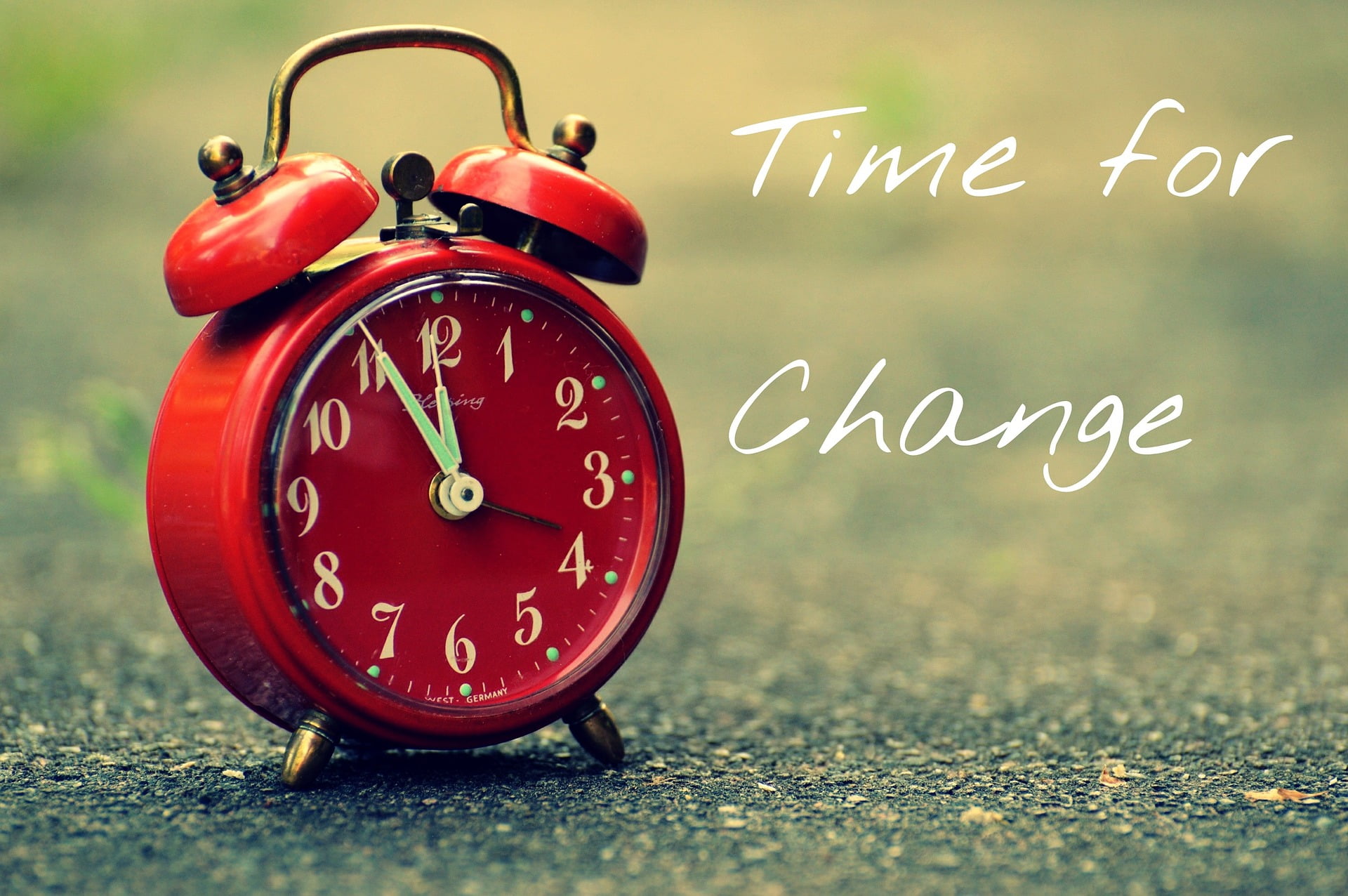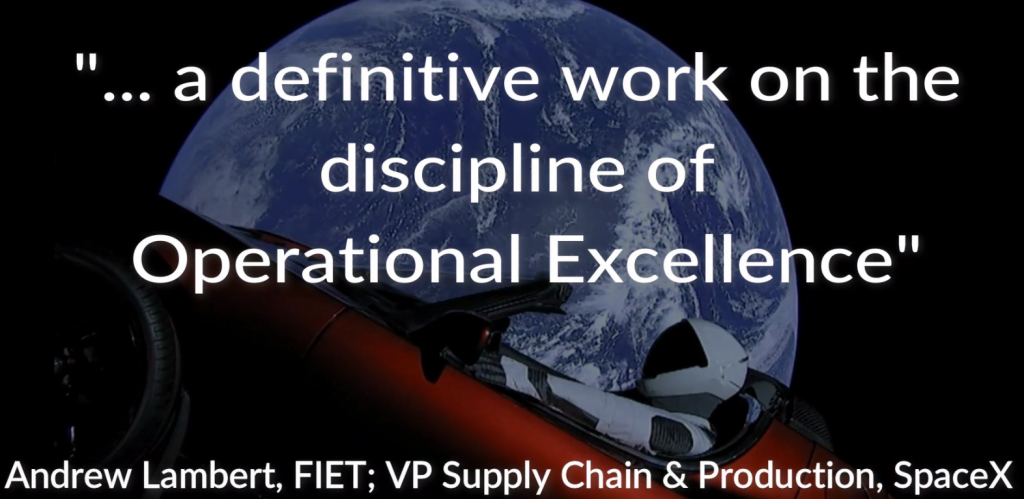Culture Change; What is it and why change it?
The COVID years of 2020 and 2021 notwithstanding, the subject of “culture change” has been a topic at many (if not all) conferences on Operational Excellence and Continuous Improvement that I have attended over the past several years.
But the conversation always seems to gravitate towards the “how”whenever the subject comes up, with little attention given to the “why” or the “what”. Nobody seems to address why an organization needs to change its culture. Or that an organization’s culture needs to change from what, to what?
It reminds me of when organizations proclaim they are going to do a reorganization. Most of the time, they don’t complete the one re-organization before they start on the subsequent reorganization. It’s as if the leadership doesn’t really know what its future self looks like and just keeps reorganizing in the hopes of being lucky and finding something that works (at least until the next reorganization).
It seems as if the journey becomes more important than the destination. And from the casual observer, it looks like the organization is just meandering about, perhaps in circles; the illusion that movement somehow equates with progress.
I was recently asked to stand-in for someone who dropped out of an Operational Excellence conference where the subject of the plenary session is “culture change”. Certainly, I have a lot of thoughts on the subject over the years, but never had the chance (or opportunity) to collect and organize those thoughts.
So, let us together explore what might be meant by culture change in an organization, why culture change might be important (even necessary) in an organization, and how we might affect change in an organization.
Let’s start with; What is culture?
After all, if we are going to change culture, we should have some notion of what culture is.
A basic definition of culture, and the one which I will use as my “lighthouse” in this article, is the shared values, beliefs, customs, behaviors, and objects that characterize a group or organization. As such, it is the way of life for a particular group or society, and encompasses the language, traditions, customs, art, music, and other aspects of a people’s goings-on.
With respect to an organization, culture refers to the shared values, beliefs, and practices that shape the behavior and interactions of employees and leaders within the organization. It will include the organization’s mission, vision, and goals, as well as its management style, communication practices, and other cultural norms.
As such, an organization’s culture will naturally have a significant impact on its success, as it can influence employee engagement, productivity, and retention, as well as the overall reputation and brand of the organization.
Close your eyes for a moment and think of an organization with whom you dread interacting versus one with whom you look forward to interacting.
What are the differences? Those are cultural differences.
What is the difference between a bad culture and a good culture?
Let’s start with some characteristics of a bad culture. For me, a bad culture in an organization is one where the values, beliefs, and behaviors of the organization are negative, toxic, or counterproductive. Such a culture can manifest in various ways, such as poor communication, lack of trust, micromanagement, low morale, high turnover, discrimination, harassment, or unethical practices.
In contrast, a good culture in an organization is one where the values, beliefs, and behaviors of the organization are positive, constructive, and aligned with the organization’s mission and goals (assuming the mission and goals of the organization are ethical, positive, and that of a good corporate citizen). As such, a good culture fosters a sense of belonging, respect, and empowerment among employees, and encourages collaboration, innovation, and accountability.
For instance, when I am looking at an organization, one of my “acid tests” for how healthy an organization is (and as proxy for its culture), is employee turnover. I examine the business and its industry and across departments down to the manager level and look for the outliers. As an example, I will expect a higher turnover rate at a fast-food restaurant as being the norm versus a manufacturer. And at a manufacturer, I would expect a higher turnover rate in a business function where employees first start; this because it is here where a new employee might decide that this company is not a good fit for them.
Some of the key differences between a bad culture and a good culture in organization include:
- Communication: In a bad culture, communication tends to be poor, hierarchical, and authoritarian, with little transparency or openness to feedback. In a good culture, communication is open, transparent, and collaborative, with a focus on listening, empathy, and constructive dialogue.
- Leadership: In a bad culture, leadership tends to be controlling, autocratic, and focused on short-term results, with little regard for the well-being or development of employees. In a good culture, leadership is empowering, collaborative, and focused on long-term growth, with a strong emphasis on employee engagement, development, and well-being.
- Values: In a bad culture, the values of the organization may be driven by greed, selfishness, or self-interest, with little concern for the impact on stakeholders or society. In a good culture, the values of the organization are driven by a sense of purpose, social responsibility, and a commitment to ethical behavior and sustainability.
- Innovation: In a bad culture, innovation tends to be stifled, with a focus on maintaining the status quo and resisting change. In a good culture, innovation is encouraged, with a focus on experimentation, risk-taking, and continuous improvement.
A good culture is one where employees feel valued, supported, and motivated, and where they can contribute their best work towards the organization’s success. Whereas a bad culture will be detrimental to the organization’s reputation, performance, bottom line, and will lead to a loss of talent and customer loyalty.
What is meant by culture change when referring to an organization?
Culture change in the context of an organization refers to a deliberate effort to transform the organization’s core values, beliefs, attitudes, behaviors, and practices. It involves a shift from the current ways of doing things to a new and improved set of norms that reflect the organization’s reinvigorated vision, mission, and strategic goals.
However, culture change almost never starts spontaneously. Nobody within an organization wakes up one day and says “we have to change our culture” and then starts changing it. Rather, culture change is almost always the result of some external stimulation of an organization such as; changes in senior leadership, changes in market conditions or business factors, organizational restructuring, or mergers and acquisitions. It’s motivations will likely seek to improve employee engagement, enhance customer satisfaction, increase productivity and efficiency, or combinations thereof.
The process of culture change will be complex and multifaceted. It will involve a range of strategies such as communication, training, coaching, leadership development, and performance management. Culture change is no easy undertaking. There is no pill to swallow or button to push. It will require a significant investment of time, resources, and effort. It may take several years to achieve the desired outcomes.
The ultimate goal of culture change in an organization is to create a more adaptive, resilient, and innovative organization that is better equipped to meet the challenges of a rapidly changing operating environment. In essence, where there exists the conditions that an organization can thrive; the ability to see further beyond the horizon, recognize opportunities and threats sooner, devise and deploy decisive responses faster – and where there exists an environment where mutual respect, transparency, and collaboration are the norm.
Why is culture change necessary in business?
In 1964, Supreme Court Justice Potter Stewart wrote in a decision on obscenity that he couldn’t define it, but he knew it when he saw it. We have all probably worked in an organization that had a poor organizational culture. Oftentimes we can’t easily put our fingers on what is wrong with a company, but we can feel it. To this, I say “trust your gut.“
As such, culture change in business is often necessary for several reasons, including:
- Adaptation to changing market conditions: In today’s fast-paced business environment, organizations need to be agile and able to adapt to changing market conditions. Culture change can help organizations to become more responsive and adaptable to new challenges and opportunities that will be faced.
- Improvement in performance: Culture change can also help organizations improve their overall performance, by; increasing employee engagement and productivity, improving communication and collaboration, and enhancing innovation and creativity.
- Alignment with values and goals: Culture change can help to ensure that an organization’s culture is aligned with its values and goals, which can enhance the company’s reputation, brand, and competitive position.
- Attraction and retention of top talent: A positive and supportive culture can be a key factor in attracting and retaining top talent, which is essential for long-term success.
- Mitigation of risks: A negative or toxic culture can pose significant risks to an organization, including legal, reputational, and financial risks. Culture change can help to mitigate these risks and create a more positive and ethical work environment.
Not every organization needs to undergo a culture change. There are many organizations that already have a healthy organizational culture and possess the attributes noted above. For these organizations, vigilance is what is necessary to ensure the organization’s culture remains healthy.
At the end of the day, culture change (or vigilance) in an organization is necessary in order to stay competitive, attract and retain top talent, and create a positive and supportive work environment that is aligned with the company’s values and goals.
Who has the most influence in organization culture?
Almost always, the most influential group in shaping an organization’s culture is its leadership. However, this might not be the CXO. According to some studies, the average tenure of a CXO is five-years or less. This is not enough time for the CXO to change the culture of an organization and also run its day-to-day operations. In organizations with such turnover at the top, the real keepers of the organization’s culture lie with those in middle management whose tenure is normally longer than the CXO’s and provide continuity from CXO team to CXO team.
However, according to another study, the CEO’s of world’s best performing organizations held their position for an average of 15 years. In these organizations, the length of the CEO’s tenure would have almost certainly established the culture of the CEO as the culture of the organization.
It is important to note that changing an organization’s culture requires a collaborative effort from all employees; without them, the effort will fail – it’s inevitable. So, if we look at the organization in its entirety, there are several groups of people who can have significant influence on the organization’s culture. These groups include;
- Leadership: The leaders of the organization, including the CXO, executives, and managers, play a critical role in shaping the organization’s culture. Their behavior, communication style, and decision-making set the tone for the rest of the organization, and they have a significant impact on employee engagement, motivation, and morale.
- Employees: The employees of the organization will also have a significant influence on the organization’s culture. Their attitudes, behaviors, and interactions with one another are normally reflective of leadership and can contribute to a positive or negative work environment and influence the overall culture of the organization.
- The Value Chain: The customers and vendors of an organization can also have an indirect influence on the organization’s culture. Their feedback, reviews, expectations, and interactions can shape the organization’s values, priorities, and reputation, and can influence the behavior and attitudes of the organization’s employees.
- Industry and external factors: The industry and external factors, such as regulations, economic trends, and social movements, can also have an impact on the organization’s culture. These factors can shape the organization’s values, priorities, and strategies, and can influence how the organization is perceived by its stakeholders; not always in the best interest of the organization nor for the better.
It’s important that employees at all levels of the organization be engaged and actively involved in the culture change process. They must be encouraged to provide feedback and offer their ideas and suggestions for improving the organization’s culture. It is equally important for leadership to listen to those ideas and suggestions. This will create a sense of ownership and buy-in among employees and will help to ensure that the desired culture is embedded and sustained over time.
As such, culture change must be approached as a collaborative and ongoing effort of working together and remaining committed to the desired culture with organizations creating a more positive and productive work environment that benefits everyone across the value-chain.
But ultimately, the leadership must take an active role in driving the culture change process and must be accountable for the success or failure of the initiative. At the end of the day, the responsibility for changing an organization’s culture must lie with the senior and junior leadership of the organization.
How long does it take to change an organization’s culture?
Changing an organization’s culture is a complex and ongoing process. As mentioned earlier we need to be thinking in terms of years when contemplating culture change. Much will depend on various factors such as the size of the organization, the complexity of the culture change, the level of commitment from leadership and the alignment of the resources invested in the process.
The stages of culture change may vary depending on the specific model or framework used, but in general, there are several common stages that organizations go through when undertaking a culture change initiative. These stages include:
- Diagnostic: This stage involves assessing the current culture of the organization, including its values, beliefs, behaviors, and practices. This can involve surveys, focus groups, interviews, and other assessment tools to gather feedback from employees and stakeholders.
- Vision and strategy: This stage involves defining a clear and compelling vision for the desired culture, as well as a strategy roadmap for achieving it. This can involve setting specific goals, identifying key behaviors and practices to change, and establishing metrics to track progress.
- Communication and engagement: This stage involves communicating the vision and strategy for the culture change to employees and engaging them in the process. Communication must be clear, consistent, and transparent, and must involve ongoing dialogue and feedback. Engagement can involve training, coaching, and other forms of support to help employees adopt new behaviors and practices.
- Implementation: This stage involves implementing the changes identified in the strategy roadmap, and monitoring progress towards the desired culture. This can involve ongoing measurement and feedback to ensure that the desired culture is being embedded and sustained over time.
- Sustaining and Reinforcing: This stage involves sustaining the desired culture over the long term and reinforcing the desired behaviors and practices. This can involve ongoing communication, training, and monitoring to ensure that the culture remains aligned with the organization’s values, vision, and goals.
The fundamentals of culture change programs in an organization may also vary but, in general, there are several key elements that are important to consider when implementing a culture change program. These include:
- Lead by example: Changing an organization’s culture requires strong leadership. Leaders need to model the desired behaviors and values. And they need to hold themselves accountable for upholding the new culture. Nothing will kill culture change faster than hypocrisy.
- Training and development: Training and development programs can help employees to develop the skills and knowledge they need to adopt new behaviors and practices. This can include training in leadership, communication, collaboration, and other key skills.
- Measurement and feedback: Measurement and feedback are important to culture change, as they help to track progress towards the desired culture and identify areas for improvement. Metrics must be aligned with the goals of the change effort and must be tracked regularly to ensure that progress is being made.
Emotional intelligence will also play a significant role in culture change within an organization and the organization’s leadership and change agents need to be aware of the emotional dynamics that will be in play. Emotional intelligence involves the ability to recognize, understand, and manage one’s own emotions, as well as the emotions of others. It will influence culture change in an organization in several ways:
- Self-awareness: Emotional intelligence allows leaders and employees to develop a greater sense of self-awareness, which is essential to understanding their own behaviors and how they impact others. This can help them to identify areas for personal growth and development, and to become more receptive to feedback and coaching.
- Empathy: Emotional intelligence also involves the ability to empathize with others and to understand their perspectives and feelings. This can help to create a more inclusive and supportive work environment, where employees feel valued and respected.
- Relationship building: Emotional intelligence can also help to build stronger relationships among employees and between employees and leaders. This can help to create a more collaborative and cohesive work environment, where employees are more likely to work together towards common goals.
- Conflict resolution: Emotional intelligence can also help to facilitate conflict resolution within an organization. By understanding the emotions and perspectives of others, leaders and employees can more effectively address and resolve conflicts, which can help to reduce tension and improve morale.
Having the right level of emotional intelligence will significantly influence culture change in an organization in both velocity (how fast the change occurs) and depth (how pervasive the change is). By developing greater self-awareness, empathy, relationship building, and conflict resolution skills, leaders and employees can create a more positive and productive work environment and establish a culture that is more aligned with the organization’s values and goals.
Can a new culture in an organization really be created?
The simple answer is yes. A new culture in an organization really can be created. Culture is not a fixed or unchangeable aspect of an organization, but rather a dynamic and evolving phenomenon that can be shaped and influenced over time.
Creating a new culture will also involve challenging existing norms and practices, and will require changes to organizational structures, processes, and systems. But you can’t hit home runs if you are afraid of breaking a few windows. It will also require a shift in mindset and behavior among employees, and a willingness to embrace new ways of working and collaborating.
However, with the right leadership, strategy, and commitment, a new culture in the organization can be created; one that aligns with the organization’s values, vision, and goals, and that creates a more positive and productive work environment for everyone in the organization and across the entire value-chain.
Changing an organization’s culture is much like being water on the rock. It will take constant erosion of the rock by the water and a lot of time, but the rock will eventually succumb to the water. It is inevitable.
Be the water.
About the Author
Paris is an international expert in the field of Operational Excellence, organizational design, strategy design and deployment, and helping companies become high-performance organizations. His vehicles for change include being the Founder of; the XONITEK Group of Companies; the Operational Excellence Society; and the Readiness Institute.
He is a sought-after speaker and lecturer and his book, “State of Readiness” has been endorsed by senior leaders at some of the most respected companies in the world.
Click here to learn more about Joseph Paris or connect with him on LinkedIn.









